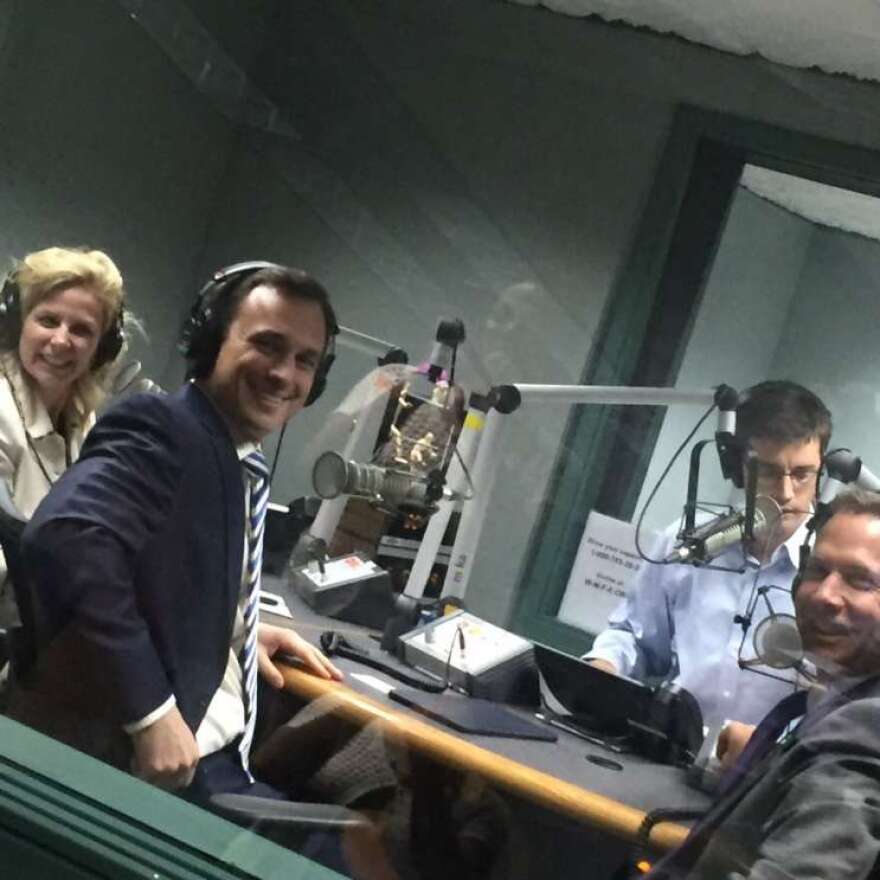There are big changes to Central Florida's health care landscape: three hospitals have three new leaders.
Intersection Host Matthew Peddie interviews Daryl Tol, the CEO of Florida Hospital, David Strong, the CEO of Orlando Health and Dana Bledsoe, the president of Nemours Children’s Hospital.
Listen to the audio for the full interview, and see below for excerpts.
MATTHEW PEDDIE: What's unique running a children’s hospital versus another hospital?
DANA BLEDSOE: “We have the privilege of focusing solely on the needs of children. And that gives us a little different demographic, as we think about the child and the family. Primarily our focus is the millennials, and they have a whole different universe. … The millennials focus on social media and just the model of care and their expectations are very different.”
MATTHEW PEDDIE: There’s quite a bit of expansion underway. What’s driving the expansion of campuses in Central Florida?
DAVID STRONG: It’s an easy answer: The growth of the area. Since 2011, the Orlando area has seen an 8 percent increase and is expected to increase another 8 percent by 2020. So the growth you’re seeing from our systems is to keep up with the demand in the community. I’d also say we have a unique community. The visitors we have, we saw in the paper last week, 66 million visitors a year. Some of the visitors are going to become ill during their visit, and each of us have facilities that see a number of visitors.
MATTHEW PEDDIE: Is there enough of this growth to sustain the competition between the hospitals?
DARYL TOL: We study need carefully, I think all of us do. And the fact is we’re creating this tapestry of access. It’s not just these large hospital campuses. It’s everything from physician office spaces to ambulatory centers to freestanding access points like urgent centers and freestanding emergency rooms. When you look at where those are going, regardless of which of us is putting it there, there’s typically a need, there’s a gap in the marketplace, a place where people are going a bit too far for health care services.
MATTHEW PEDDIE: A law was proposed last session to do away with the certificate of need, that would open up more beds. It didn’t pass. But in theory, if you did away with state approvals for new beds, would you build more?
DAVID STRONG: I’ve been in states that both have CON laws and those that don’t … In my judgment, the CON actually protects patients. It regulates services. So hospitals have services that not only provide high end services that lose money, but also have services that support those services that don’t lose money. I’ve been in a community where a group of surgeons decided to create a hospital that was solely focused on one type of surgery, and they left the hospital because they didn’t need to take call any more or do emergency services. Then, if a patient in that particular community was injured and came into the ER, they didn’t have that specialty available to take care of the patient. The bottom line is the CON laws protect patients, so we’re supportive of those. And I don’t think it restricts services, when it’s at a level like at Florida.
MATTHEW PEDDIE: Daryl, would it be good for patients to have more competition?
DARYL TOL: If someone were to completely deregulate health care, imagine the wild world that would create, that would be one conversation. But as long as you have an inequity among care providers, you do have the challenge of consequences of decisions like eliminating CON. Organizations like the three of ours, we have a lot of resources. We would compete, no question, with other providers coming in. But there are organizations without the resources we have, safety net organizations that would absolutely close their doors in that environment.
MATTHEW PEDDIE: Let’s talk about price transparency. Why isn’t health care like other goods where consumers can shop around on price and quality?
DAVID STRONG: Part of it is the emergent nature of health care. If your child is injured or you’re injured, you don’t immediately search for price. You want to receive care. The other is human beings are not widgets. It’s not like buying a car when someone has cancer or another disease process, you don’t know how that individual will respond to treatments or different therapies being used. Trying to set a price in advanced for certain things is impossible. Having said that, in health care, we definitely need to be more transparent.
DARYL TOL: Even within a hospital’s four walls, there are many businesses operating. The physician runs their own billing service and is independent. Various other services are provided by independent physicians. It’s not just the hospitals that have to pull our resources. But each of those entities providing care need to get together. And we’ve got to do it because transparency and understanding is critical, and bring together one pricing model across diff entities providing care.
MATTHEW PEDDIE: Is that likely to happen any time soon?
DARYL TOL: It has to happen soon.


